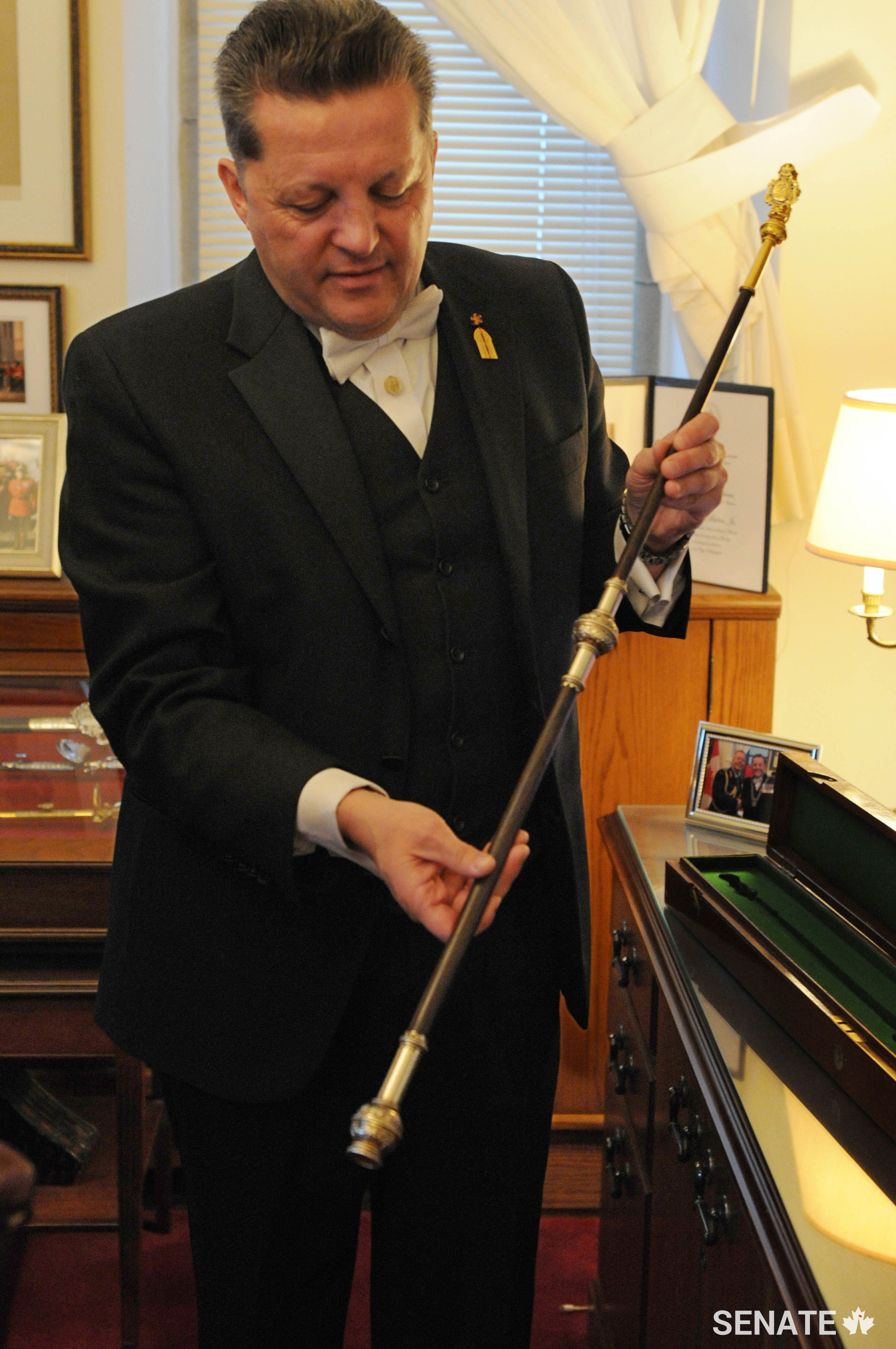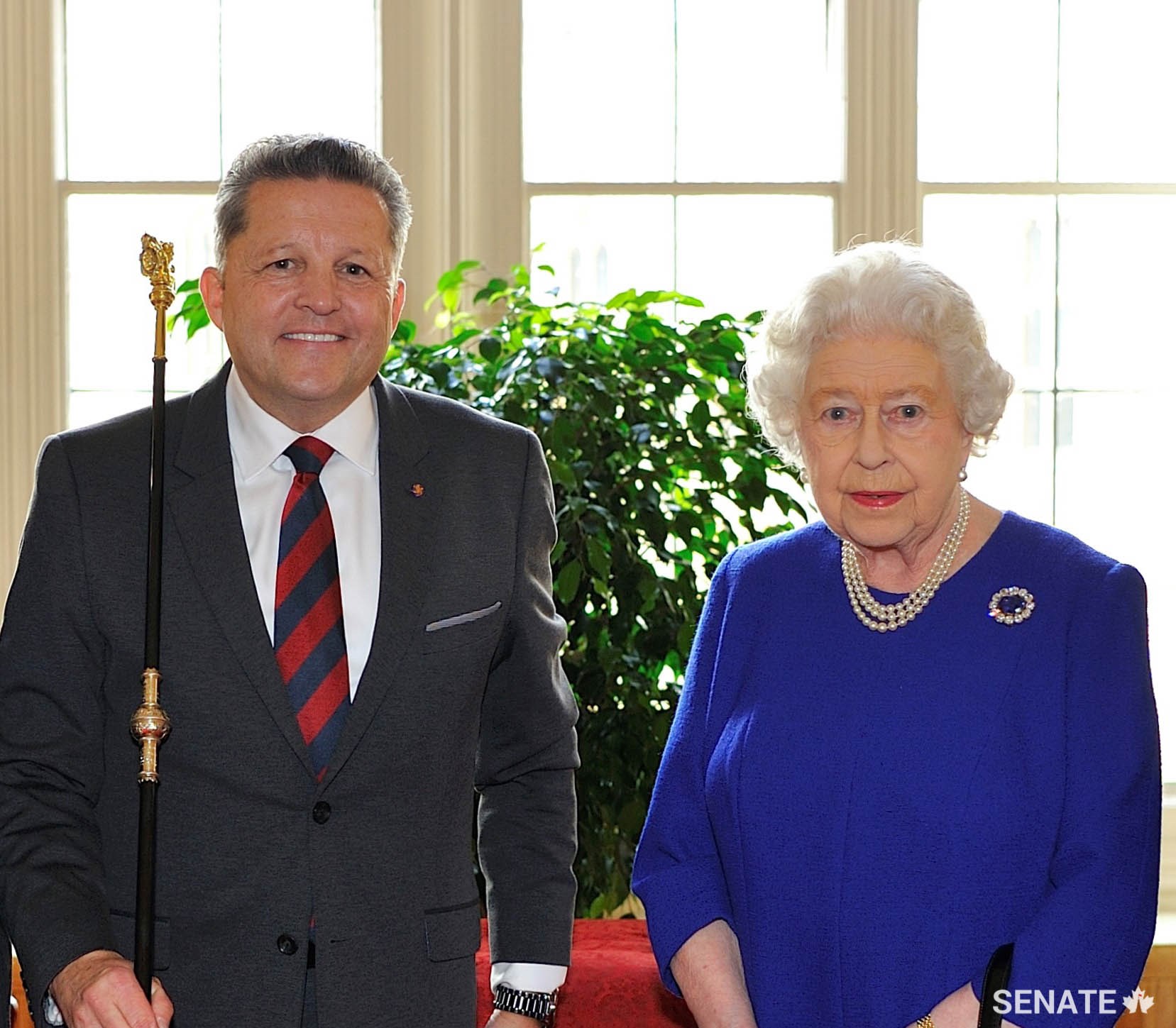Usher of the Black Rod is Parliament’s royal attendant

In the Canadian context, the Usher of the Black Rod seems like a role steeped in parliamentary tradition and mystery. However, it is really quite easy to understand the purpose of this role in Parliament.
The Usher of the Black Rod is appointed by the Governor in Council, which means the appointment is made by the Governor General at the recommendation of the Prime Minister. The Usher is the Queen’s personal attendant and messenger in Parliament and the most senior chief protocol officer in the Senate. In other words, it’s the Usher’s job to carry out tasks that the Queen — or more commonly, the Governor General — would want performed.

The Usher of the Black Rod carries a staff made of ebony with gold tips — literally a black rod. About the size of a walking cane, the black rod represents the Usher’s authority in the Senate, similar to the way some military officers carry a baton on the battlefield or parade square to indicate that they are in charge.
The Usher of the Black Rod, whose title is often shortened on Parliament Hill to “the Black Rod”, is responsible for co-ordinating ceremonies of State that take place in Parliament. These include the Installation of a Governor General and swearing-in of new senators, the Opening of Parliament, Speech from the Throne and Royal Assent ceremonies.
For example, the Usher plays the lead role in organizing all aspects of the Speech from the Throne, which takes place at the beginning of a new parliamentary session, where the government outlines its plans, priorities, and goals it wants to accomplish. The Usher must knock on the doors of the House of Commons Chamber three times — using the black rod itself — to formally notify members of the House of Commons that “it is the desire of” the Queen or Governor General that they proceed “immediately” to the Senate Chamber to hear the speech.
On each day that the Senate sits, proceedings begin with the Speaker’s Parade, a two-minute procession where the Speaker and some Senate officials proceed from the Speaker’s office to the Senate Chamber. A member of the security staff leads the parade, followed by the Usher.
The Usher is also officially responsible for the security in the upper house of Canada’s Parliament and its galleries. Ultimately, it’s up to the Usher to decide, on the direction from the Speaker, who is permitted to enter the Senate Chamber.
The position of the Usher of the Black Rod was created in England in 1348 and has been adopted by parliaments in other Commonwealth countries who operate under the Westminster model. Many of Canada’s parliamentary traditions are derived from the United Kingdom’s Parliament.
The position is based on the Gentleman Usher of the Black Rod in the United Kingdom’s House of Lords. In fact, the Canadian Senate used the same title until 1997, the use of the title was then put to a vote in the Senate when Mary C. McLaren became the first woman to hold the post. Since then, the title has been gender-neutral. (In the United Kingdom, when a woman holds the position, she is known as the Lady Usher of the Black Rod).
Greg Peters, a retired member of the Royal Canadian Mounted Police, was appointed Usher of the Black Rod, by the Governor in Council in 2013. Mr. Peters was reappointed by the Governor in Council on October 1, 2018. He is the Senate’s 16th Usher.
The Usher also oversees the Senate Page Program, university students who work at the Senate delivering reports and other documents to senators, relaying messages, running errands for senators and ringing the bells of the Senate to herald votes and the beginning and end of each sitting. Senate Pages are also responsible for supporting the work of Senators during committees and play various roles during major ceremonies.
The very first black rod of Canada was made in Montreal in the 1845 and was used in the Parliament of the United Province of Canada (encompassing what would become Ontario and Quebec). That rod was used after Canada’s Confederation in 1867 until it was destroyed by the 1916 fire that razed Centre Block in Ottawa. A new rod was made by a Garrard & Co. Ltd., the Crown jewelers in London, England in 1917-1918. In 2016, the new black rod underwent a restoration after a century of use. This royal restoration was a gift from Her Majesty, Queen Elizabeth the II to Canada for its 150th birthday in 2017.
The rod in use today boasts an intricate golden lion on top, holding a shield with a royal cypher. Added to the middle knob of the rod is an engraving with Queen Elizabeth II’s name and Royal Cypher, forever acknowledging her historic reign on an important Canadian parliamentary symbol.







